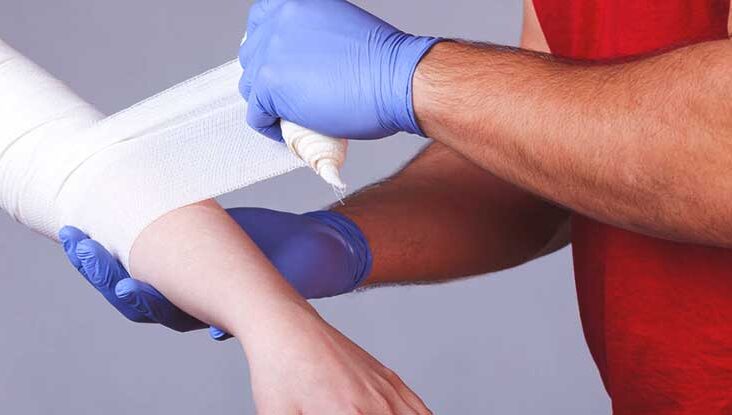Burn survivors can become frustrated that they still have issues with scarring and wounds after their initial burn injury has healed. Burn scars are an inevitable complication of burn injuries. While minor burns may heal without leaving a scar, the majority of burns will leave a permanent mark. Hypertrophic burn scars (scars in the area of the original burn that are raised) are the most common complication of a burn injury and can limit a survivor’s ability to function as well as affect their body image.
Read on to learn more about burn levels, different types of burn scars and what you can do to help them heal better and faster.
What are burns?
Healthline indicates that burns are one of the most common household injuries, especially among children. The term “burn” means more than the burning sensation associated with this injury. Burns are characterized by severe skin damage that causes the affected skin cells to die.
Most people can recover from burns without serious health consequences, depending on the cause and degree of injury. More serious burns require immediate emergency medical care to prevent complications and death.
According to WebMD, doctors group burns into different categories based on how deeply your skin has been harmed. These are called “degrees.” You can have a first-, second-, third-, or fourth-degree burn. The higher the degree, the more severe the burn is.
First-degree burn: These burns only affect the outer layer of your skin. A mild sunburn’s one example. Your skin may be red and painful, but you won’t have any blisters. Long-term damage is rare.
Second-degree burn: If you have this type of burn, the outer layer of your skin as well the dermis – the layer underneath – has been damaged. Your skin will be bright red, swollen, and may look shiny and wet. You’ll see blisters, and the burn will hurt to the touch.
Third-degree burn: Sometimes called a “full thickness burn,” this type of injury destroys two full layers of your skin. Instead of turning red, it may appear black, brown, white or yellow. It won’t hurt because this type of burn damages nerve endings.
Fourth-degree burn: This is the deepest and most severe of burns. They’re potentially life-threatening. These burns destroy all layers of your skin, as well as your bones, muscles, and tendons.
Why do burn scar form?
Like any scar, burn scars form as the result of the body’s natural healing process. As mentioned above, whether or not a burn scar is permanent depends on the depth of the burn. While first-degree burns will usually heal within 7 to 10 days without scarring, all deeper burns (second- and third-degree) heal by scarring (PubMed)
Scarring is related to age, ethnicity, and the depth and location of the burn. Scars form when the dermal or lower layer of the skin has been damaged. The body forms a protein called collagen to help heal the damaged skin. Normally the collagen fibers are laid down in a very organized manner, but in hypertrophic and keloid scars these fibers are created in a very disorganized manner, which gives the new skin/scar a different texture and appearance. Scar healing can take a long time. Scarring usually develops within the first few months after the burn, peaks around 6 months and will resolve or “mature” in 12-18 months. As scars mature they fade in color, become flatter, softer and generally less sensitive.
The different types of burn scars
The amount of heat and how long it stays in contact with your skin determine whether you get a scar and how big it is.
First-degree burns often heal on their own without scarring. Second- and third-degree burns usually leave behind scars.
Burns can cause one of these types of scars:
- Hypertrophic scars are red or purple, and raised. They may feel warm to the touch and itchy.
- Contracture scars tighten the skin, muscles, and tendons, and make it harder for you to move.
- Keloid scars form shiny, hairless bumps.
How silicone gel can help
Since burns are at high risk for abnormal scarring, it’s crucial to begin treatment early. But with all of the different creams, lotions, salves, etc. on the market that claim to help with burn scars, choosing the right product can be a difficult task. Fortunately, silicone gel makes it easy to choose a safe and effective scar treatment product.
Silicone gel is recommended as the first-line topical scar treatment option by physicians, surgeons, and scar management experts.
Silicone gel contains long chain silicone polymer (polysiloxanes), silicone dioxide and volatile component. It spreads as an ultra- thin barrier and works 24 hours per day. It has a self drying technology and itself dries within 4-5 minutes, even within 60 seconds like Nourisil™ MD silicone scar gel. Silicone gel increases hydration of stratum corneum and thereby facilitates regulation of fibroblast production and reduction in collagen production, which results into softer and flatter scar. It allows skin to “breathe”. Additionally, silicone gel protects the scarred tissue from bacterial invasion and prevents bacteria-induced excessive collagen production in the scar tissue.
Silicone gel technology is a clinically-proven treatment option for reducing the abnormal scars with over 30 years of evidence to support its effectiveness. DTPmedical supplies the high quality silicone-based scar products such as Nourisil™ MD, Bapscarcare Gel, Bapscarcare Sheet. Ask your doctor which therapy option is right for you.

